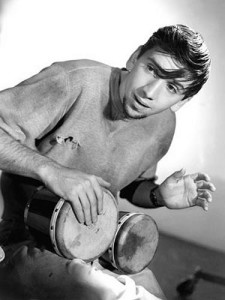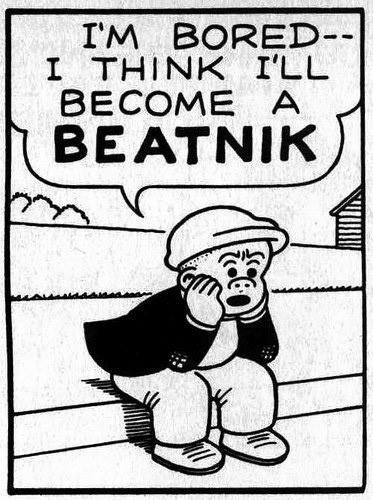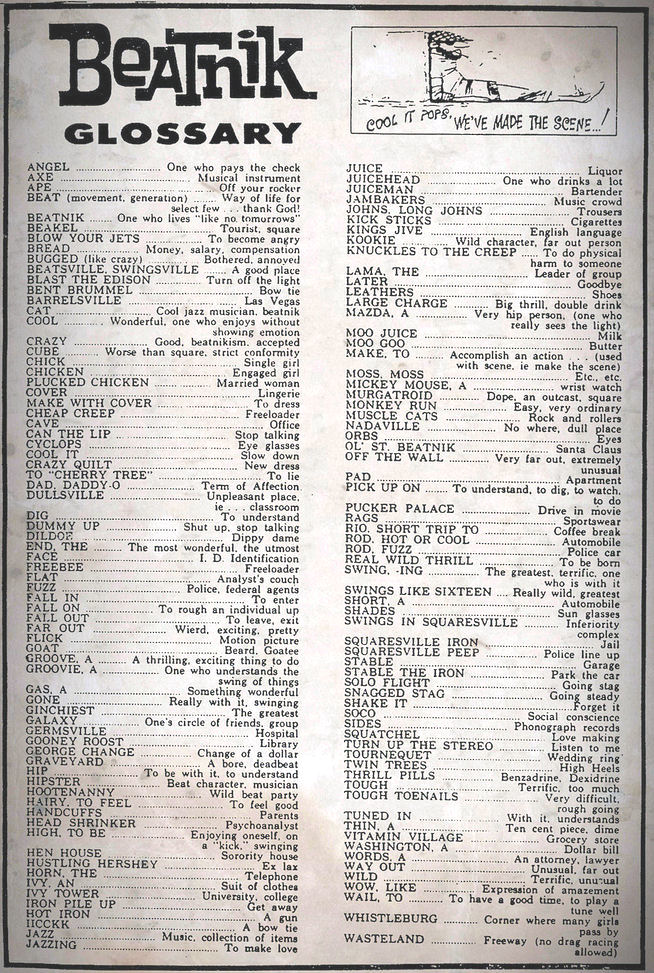 Thus came Beatniks. The Beats were the progenitors of the hippies who replaced them as the stereotype for American outcasts. The Beats were dark and somber, serious; some got tired of being down and decided to be colorful and absurdist, which is more laughs. Of course the Psychedelic Revolution helped make the change.
Thus came Beatniks. The Beats were the progenitors of the hippies who replaced them as the stereotype for American outcasts. The Beats were dark and somber, serious; some got tired of being down and decided to be colorful and absurdist, which is more laughs. Of course the Psychedelic Revolution helped make the change.
Color TV – Beatniks into Hippies
Wikipedia says: In the vernacular of the period, “Beat” indicated the culture, the attitude and the literature, while the common usage of “beatnik” was that of a stereotype found in lightweight cartoon drawings and twisted, sometimes violent, media characters. This distinction was clarified by Boston University professor Ray Carney, a leading authority on beat culture, in “The Beat Movement in Film,” his notes for a 1995 Whitney Museum exhibition and screening:
Much of Beat culture represented a negative stance rather than a positive one. It was animated more by a vague feeling of cultural and emotional displacement, dissatisfaction, and yearning, than by a specific purpose or program.
San Francisco columnist Herb Caen coined the word (which by sarcastically punning on the recently launched Russian Sputnik was apparently intended to cast doubt on the beatnik’s red-white-and-blue-blooded all-Americanness). And the mass media popularized the concept. Dobie Gillis (featuring Bob Denver, later Gilligan of Gilligan’s Island, as Maynard G. Krebs, named for his aunt, the silent “G” stood for Walter).
http://www.loti.com/sixties_TV/Maynard_G_Krebs.htm
The Castle aka The Golden Horn on 15th
[The following is also true for hippies I felt.] Life magazine, Charles Kuralt, and a host of other entertainers and journalists reduced Beatness to a set of superficial, silly externals which have stayed with us ever since: goatees, sunglasses, poetry readings, coffeehouses, slouches and “cool, man, cool” jargon. The only problem is there never were any beatniks in this sense (except, perhaps, for the media influenced imitators who came along late in the history of the movement). Beat culture was a state of mind, not a matter of how you dressed or talked or where you lived. In fact, Beat culture was far from monolithic. It was many different, conflicting, shifting states of mind. The films and videos that have been selected for the screening list are an attempt to move beyond the cultural clichés and slogans, to look past the Central Casting costumes, props, and jargon the mass media equated with Beatness, in order to do justice to its spirit.
Since 1958, the terms Beat Generation and Beat have been used to describe the antimaterialistic literary movement that began with Kerouac in 1948, stretching on into the 1960s. The Beat philosophy of antimaterialism and soul searching influenced 1960s musicians such as Bob Dylan, the early Pink Floyd and The Beatles.
At the time that the terms were coined, there was a trend amongst young college students to adopt the stereotype, with men wearing goatees and berets, rolling their own cigarettes and playing bongos. Fashions for women included black leotards and wearing their hair long, straight and unadorned in a rebellion against the middle class culture of beauty salons. Marijuana use was associated with the subculture, and during the 1950s, Aldous Huxley’s The Doors of Perception further influenced views on drugs.
Beatnik Era: Poetry In The Coffeehouse
The Beat coffehouses began to feature folk music, which started the Folk Movement. Then Bob Dylan fell under Beatle influence and changed it to Folk Rock. Folkies starting to rock created what we think of as sixties bands; and the Beat goes on…